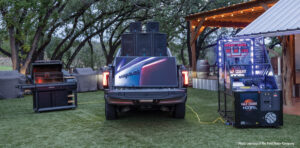In Austin, Texas, we pedaled a bicycle through downtown neighborhoods while listening to a songwriter-turned-tour guide spin behind-the-music-scene tales, and during a stop on the Gulf Coast, we rented bikes to explore the island city of Galveston on our own.
These were our first experiences with electric bicycles, and my husband went along with my plans reluctantly. He wanted the outings to be exercise and didn’t like the idea of the bike doing all the work. When we discovered that each rider chooses their level of pedal assist (including none), it turned into a win-win. He got a workout, and I was able to see more of both cities by engaging the bike’s electric motor when I needed a boost.
After these excursions, I better understood why e-bikes have been the fastest-growing segment in the U.S. cycling market as far back as 2018.
Zipp E-bikes owner Seth Leo, who fitted us with the bikes in Galveston, said we weren’t the first to think using a motorized bicycle was “cheating.” He advised my husband to turn off the assistance and pedal with the e-bike’s nearly 20 extra pounds to increase his workout.
Besides the fact that bikes are fun, those who rent or buy from his shop typically choose an e-bike so they can go faster, farther and reduce their environmental impact by riding a bike rather than driving a vehicle.
“E-bikes open up possibilities,” he said. “Now you can pedal up that super steep hill you couldn’t pedal up before. We see people who have physical limitations due to injury or age and thought they’d never be able to ride a bicycle again get on an e-bike and get back to doing something they love.”
About the bike
Electric bicycles don’t look much different than traditional bikes except for the small motor, battery and control panel on the frame. They can be as much as 20 pounds heavier than regular bicycles, though weights continue to drop as the market matures.
Power plants, batteries, riding ranges and features vary among the brands and models, but the industry has developed three standard classes of e-bikes: Class 1 has a motor that you can set to assist you as you pedal and maxes out at 20 mph; Class 2 also reaches 20 mph but has a throttle-powered mode that does not require pedaling; Class 3 bikes are pedal-assist only, but they can reach 28 mph.
Where to ride safely and legally
Follow the same bicycling safety precautions as with traditional bicycles. Be considerate while riding on trails with others — passing a pedestrian at 20 mph can be startling. Spend time researching where you’re allowed to ride an e-bike. If you’re renting, check to see if the outfitter has restrictions and ask about areas such as parks that don’t allow motorized bicycles. Regulations are different in every state and can be specific to a city or land manager. Resources, such as PeopleForBikes’ Ride Spot app and local bike shops, include information about where to ride, but always check with the location you plan to ride.
Remember, regulations are changing regularly as more e-bikes enter the market. The National Park Service announced in 2020 that superintendents throughout the system can allow Class 1 e-bikes on roads and trails where traditional bicycles are also allowed; however, they retain the right to limit e-bike use for safety reasons.
Battery and charging safety
The lithium-ion batteries that power e-bikes must be used properly to avoid overheating. When the batteries are poorly made or charged too long, they can cause fires. The New York City Fire Department issued a bulletin addressing the issue, providing the following advice.
Only buy or rent e-bikes certified by a nationally recognized testing laboratory (UL, ETL and CSA). Use the original battery, power adapter and power cord supplied with the device, or a manufacturer-recommended and/or a testing laboratory-certified replacement.
Plug the e-bike directly into a wall outlet when charging and charge in a safe area, like a garage. Make sure no combustibles are nearby and add a smoke detector in the area. Monitor the e-bike and battery when it is being charged.
Photo courtesy of MeLinda Schnyder









